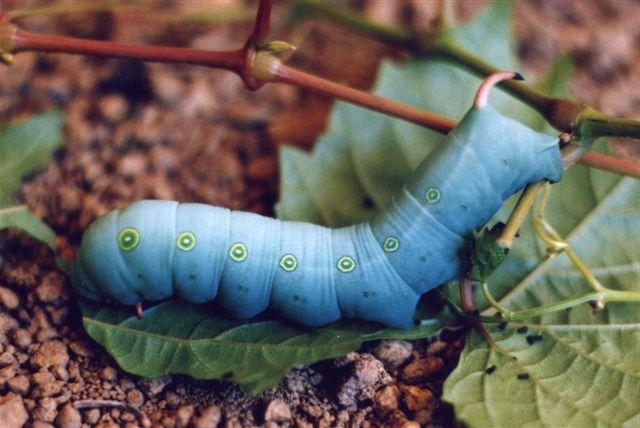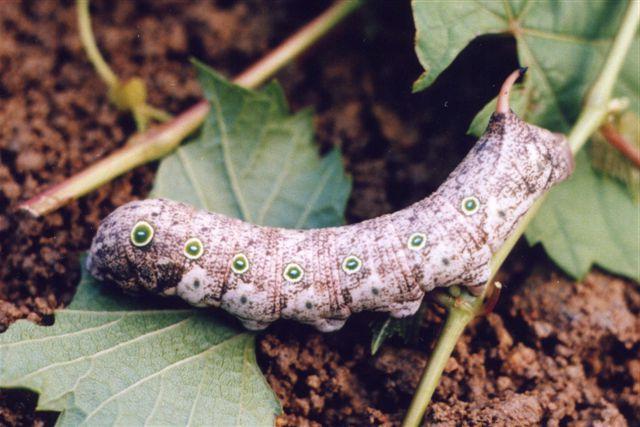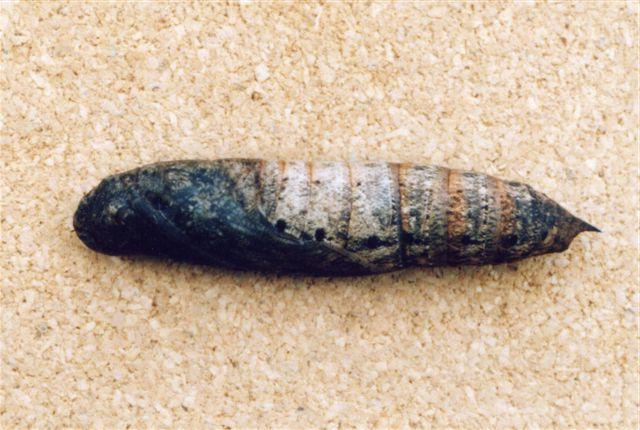
| (formerly known as Spatalia indistincta) NOTODONTINAE, NOTODONTIDAE, NOCTUOIDEA | (donherbisonevans@yahoo.com) and Stella Crossley |

early instar
(Photo: courtesy of Dick Whitford, Mt. Molloy, Queensland)

| (formerly known as Spatalia indistincta) NOTODONTINAE, NOTODONTIDAE, NOCTUOIDEA | (donherbisonevans@yahoo.com) and Stella Crossley |

early instar
(Photo: courtesy of Dick Whitford, Mt. Molloy, Queensland)
The Caterpillars of this species are smooth and brown with a large head, and a pale double lump on the last segment.

Later instars develop scattered pale spots, and a bulbous prothorax.
 head |  tail |
The caterpillars feed on various plants in FABACEAE, including

The caterpillars can grow to a length of about 6 cms. The caterpillars pupate in a silky cocoon between leaves of the foodplant.

The adult moths have dark brown wings that have complex dimorphic patterns. The males have two angular white patches on each forewing, and a forked tuft of long scales on the tip of the abdomen.

The females have a broad pale streak on each forewing.

Both sexes have forewing hind margins each have two concave arcs. The hindwings are pale brown. The wingspan is about 7 cms.

The species has been found in



Further reading :
Lionel Walter Rothschild,
On some apparently new Notodontidae,
Novitates Zoologicae,
Volume 24 (1917), p. 231.
 caterpillar |  butterflies |  Lepidoptera |  moths |  caterpillar |
(written 22 October 2018, updated 17 September 2025)